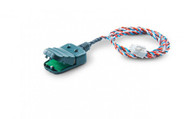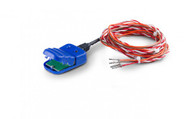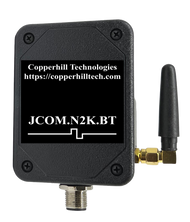- Home
- CANCrocodile
- FMSCrocodile - Contactless FMS Gateway
Product Description
Free Shipping Within the United States!
The Fleet Management Systems Interface (FMS) is a standard interface for monitoring vehicle data of commercial diesel-engine vehicles. European manufacturers such as Daimler AG, MAN AG, Scania, Volvo (including Renault), DAF Trucks, and IVECO created the MS-Standard in 2002 to advance manufacturer-independent telematics applications.
The data format complies with the SAE J1939 Standard. The message frequency is between 20 ms (e.g., engine speed) and 10 seconds (e.g., vehicle identification number).
- Physical Layer according to ISO 11898 (250kb/s)
- Application Layer according SAE J1939/ 71
- Data Link Layer according SAE J1939/ 21
The FMSCrocodile contactless gateway securely monitors CAN bus data without any electrical contact with the CAN wires, and it automatically generates and sends FMS and Telematics messages to its output CAN 2.0B interface (SAE J1939 Standard). Thus, telematics unit configuration is simple since irrelevant data from the bus is filtered, and the gateway transmits only useful information for vehicle telematics applications.
FMSCrocodile Advantages
Transmission of ready-to-use telematics PGNs
The FMSCrocodile gateway reads the CAN bus data from the vehicle network and transmits only filtered FMS and Telematics messages (PGNs). Further message analysis and parsing are not required.
Linking CAN Bus messages (PGNs) from several networks
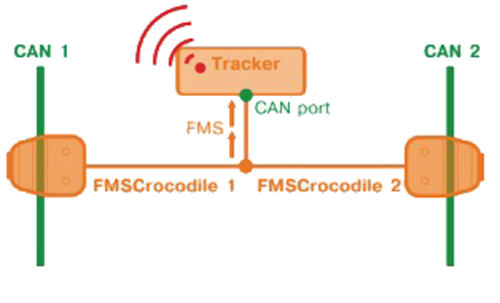
Several units of the FMSCrocodile gateways, reading data from different CAN buses, can be interconnected with each other to transmit data to just one CAN-port of the telematics unit.
CAN Bus Protection
FMSCrocodile’s contactless method of connecting to wires protects the CAN bus from signal reversal; the CAN bus is protected from intentional or accidental active requests of the telematics unit.
FMSCrocodile For Fuel Consumption Monitoring
The FMSCrocodile gateway can serve as a fuel counter. This feature is valuable for vehicles that do not render fuel consumption data per trip, while immediate fuel consumption data is available. The contactless FMS gateway receives instant fuel consumption from the CAN bus and calculates fuel consumption from the engine start. The output message is according to the SAE J1939 standard.
Technical Specifications
- Nominal supply voltage: 10 … 45 VDC
- Operation temperature range: -40 … +85 °С
- Current consumption: (@24 VDC/12 VDC), not more than 40 mA
- Weight: 100 g (~3.5 oz)
- Level of message losses: Not more than 1 %
- Input interface: CAN 2.0B (SAE J1939)
- Output interface: CAN 2.0B (SAE J1939)
FMSCrocodile - Connector Pinout

Note: The colors as shown in above image represent the color of the wire associated with the signal.
FMSCrocodile Output Interface
The FMSCrocodile gateway filters the following CAN messages (PDNs):
61440 Electronic retarder controller 1
61443 Electronic engine controller 2
61444 Electronic engine controller 1
61445 Electronic transmission controller 2
64777 High resolution fuel consumption (liquid)
64932 PTO drive engagement
64933 Door control 2
64977 FMS-standard interface identity/Capabilities
65102 Door control 1
65110 After treatment 1 diesel exhaust fluid tank 1 information
65112 Air suspension control 4
65131 Driver's identification
65132 Tachograph
65136 Combination vehicle weight
65198 Air supply pressure
65216 Service information
65217 High resolution vehicle distance
65237 Alternator information
65253 Engine hours, revolutions
65254 Time/Date
65257 Fuel consumption (liquid)
65258 Vehicle weight
65260 Vehicle identification
65262 Engine temperature 1
65265 Cruise control/Vehicle speed 1
65266 Fuel economy (liquid)
65269 Ambient conditions
65276 Dash display
Notes:
- The content of the FMSCrocodile output messages depends on the data available from the CAN bus. This data may differ depending on the manufacturer, the model and the model year.
- The FMSCrocodile gateway automatically increments the trip fuel consumption counter, calculating it from "Hourly fuel consumption" (SPN 183) and stores the computed values inside an internal memory until power-off. Minimum step of trip fuel consumption counter increments is 0.5 L. If standard PGN 65257, containing "Volume of fuel consumed in a trip" (SPN 182) and/or "Fuel consumption by engine" (SPN 250), is transmitted over the CAN bus, this standard PGN will have higher priority and will be transmitted to the output of FMSCrocodile without any modifications.
Documentation
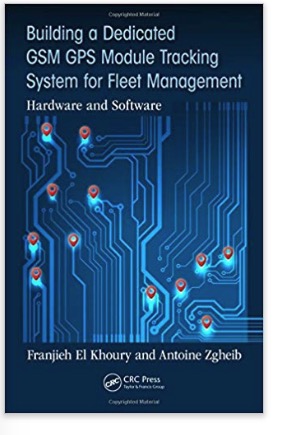 Building a Dedicated GSM GPS Module Tracking System for Fleet Management: Hardware and Software
Building a Dedicated GSM GPS Module Tracking System for Fleet Management: Hardware and Software
This book shows how to build an "INFelecPHY GPS Unit" (IEP-GPS) tracking system for fleet management based on 3G and GPRS modules. This model should provide reliability since it deals with several protocols:
- HTTP and HTTPS to navigate, download, and upload in real-time the information to a web server.
- FTTP and FTTPS to handle in a non-real time the files to the web application.
- SMTP and POP3 to send and receive an email directly from the unit in case of any alert.
Similar to a mobile device, but without a screen for display, it is multifunctional because it links to a GPRS module, a camera, a speaker, a headphone, a keypad, and a screen.
 Loading... Please wait...
Loading... Please wait...




